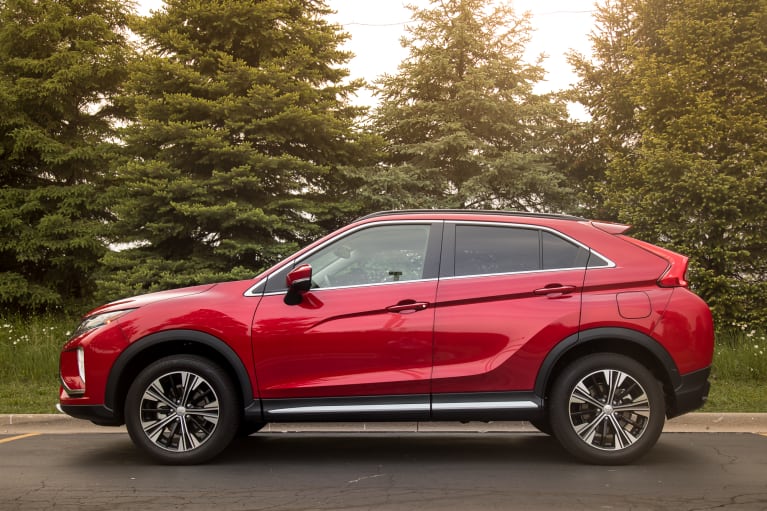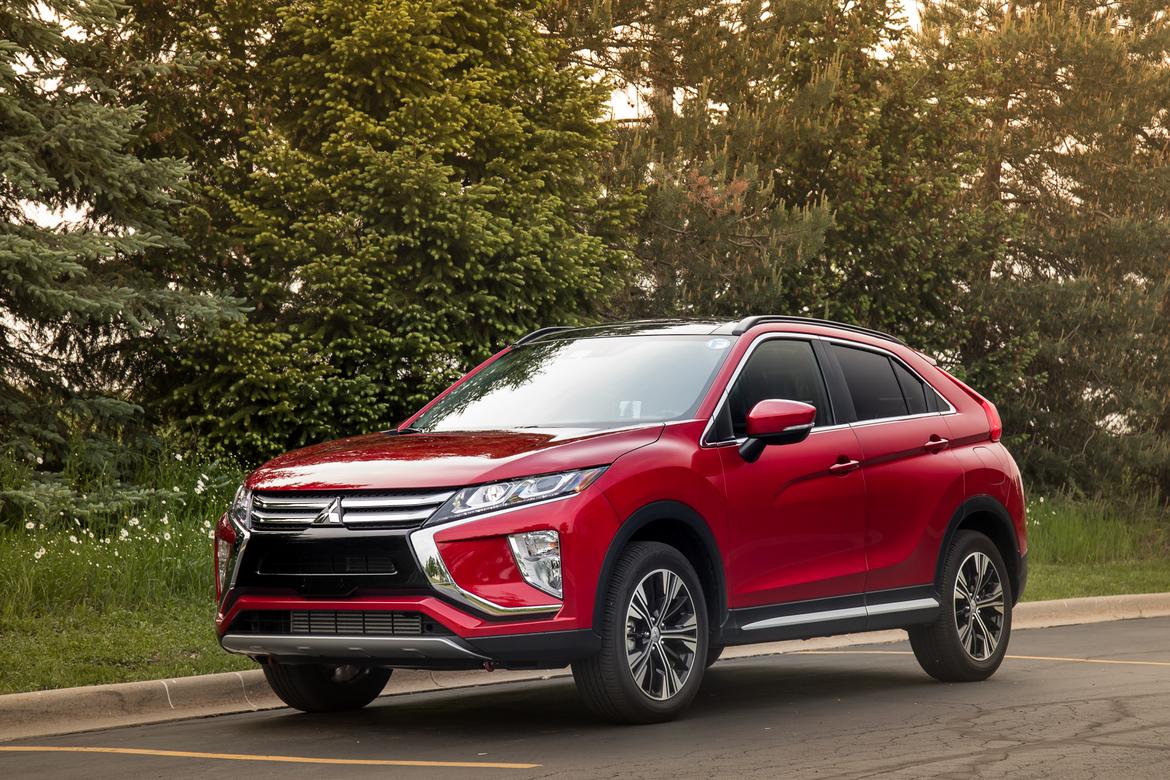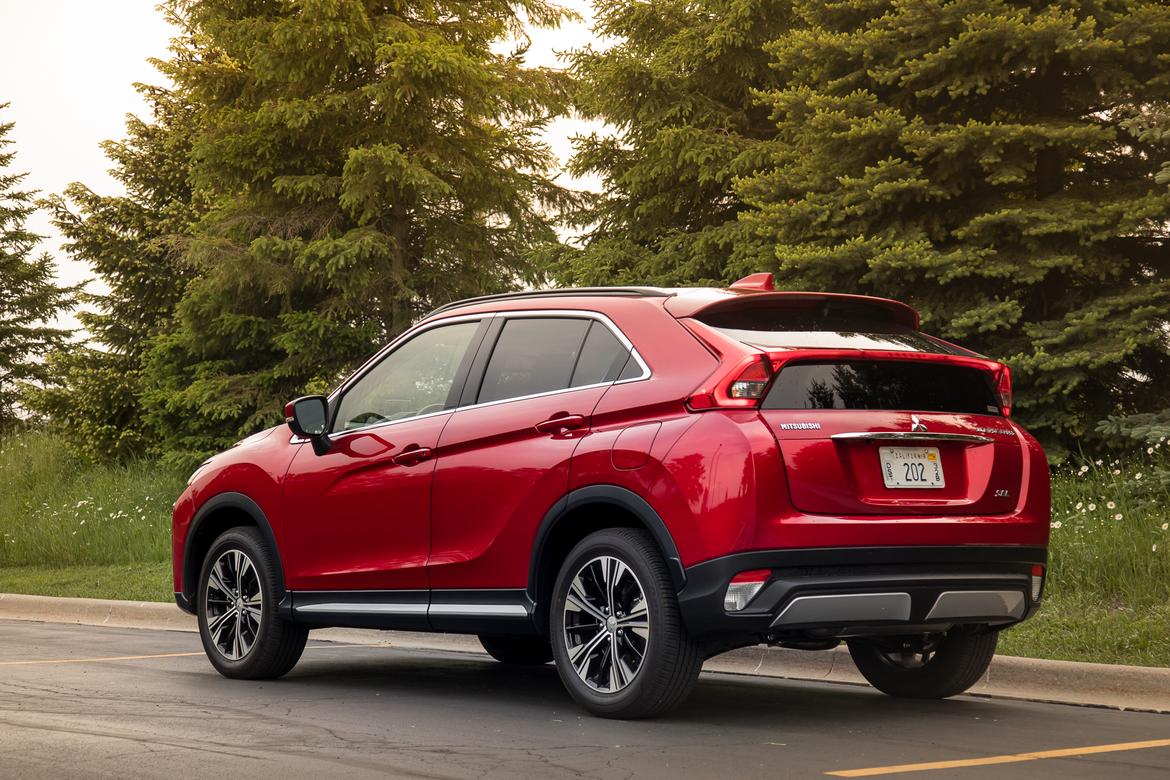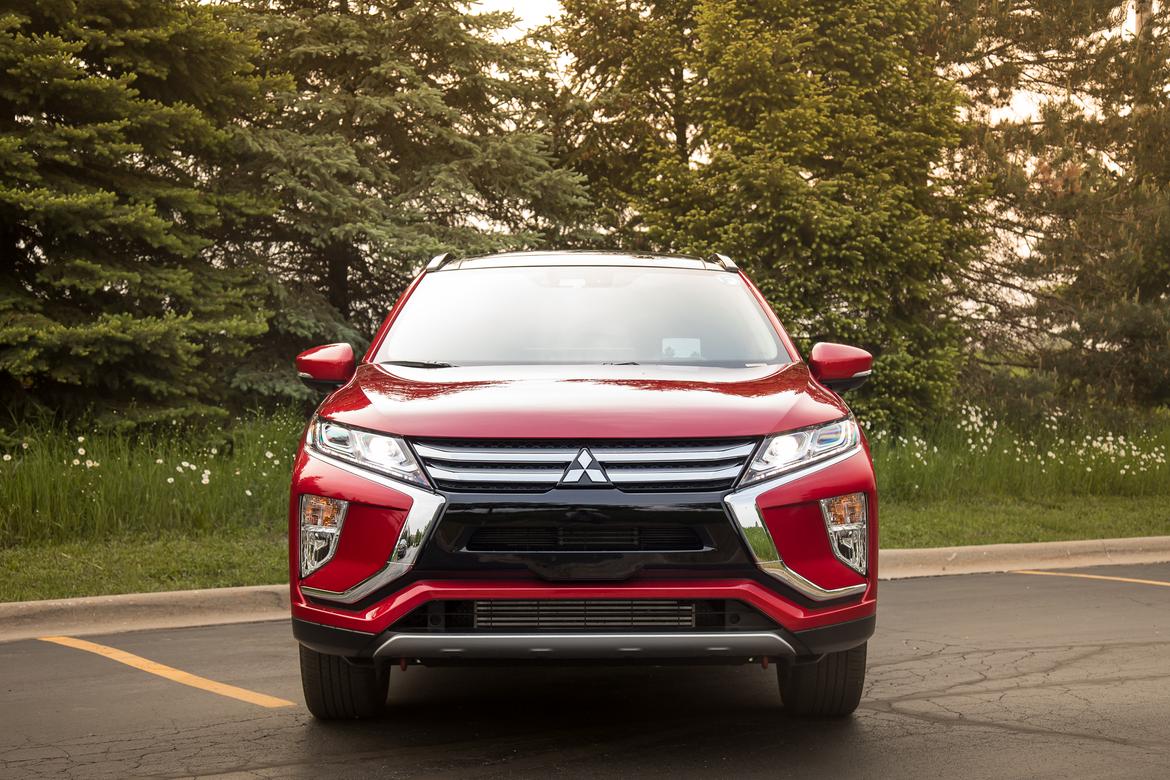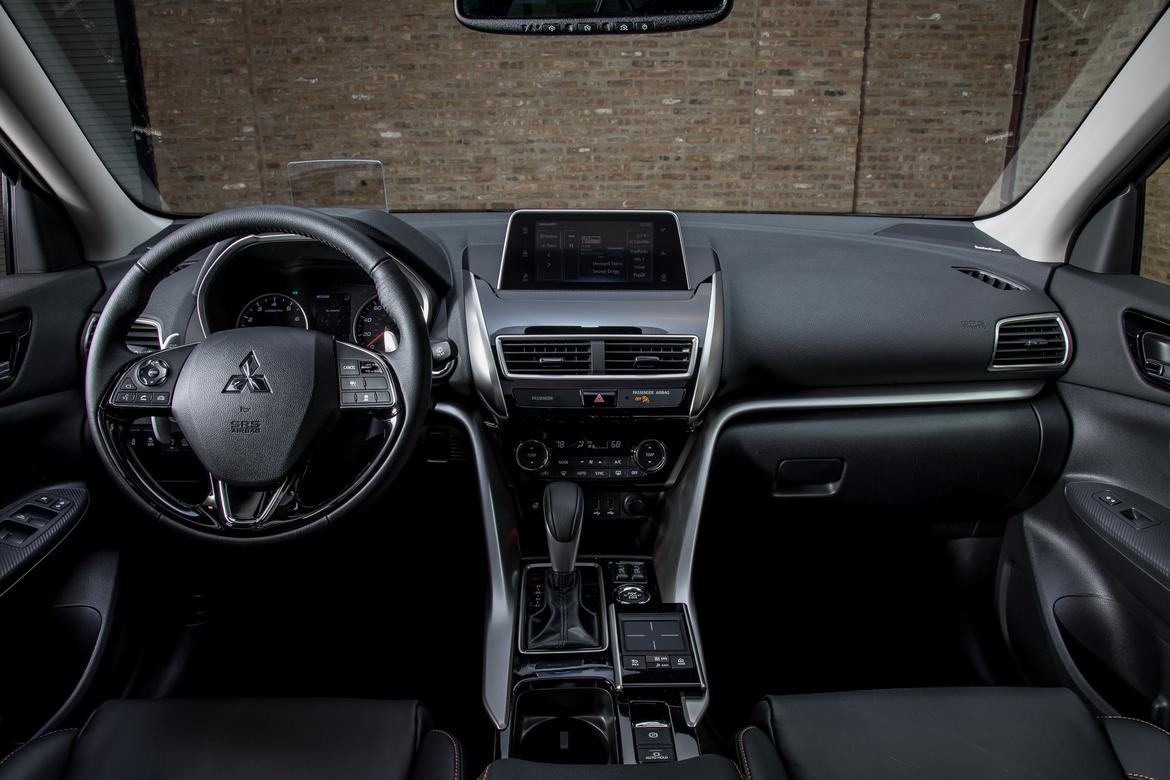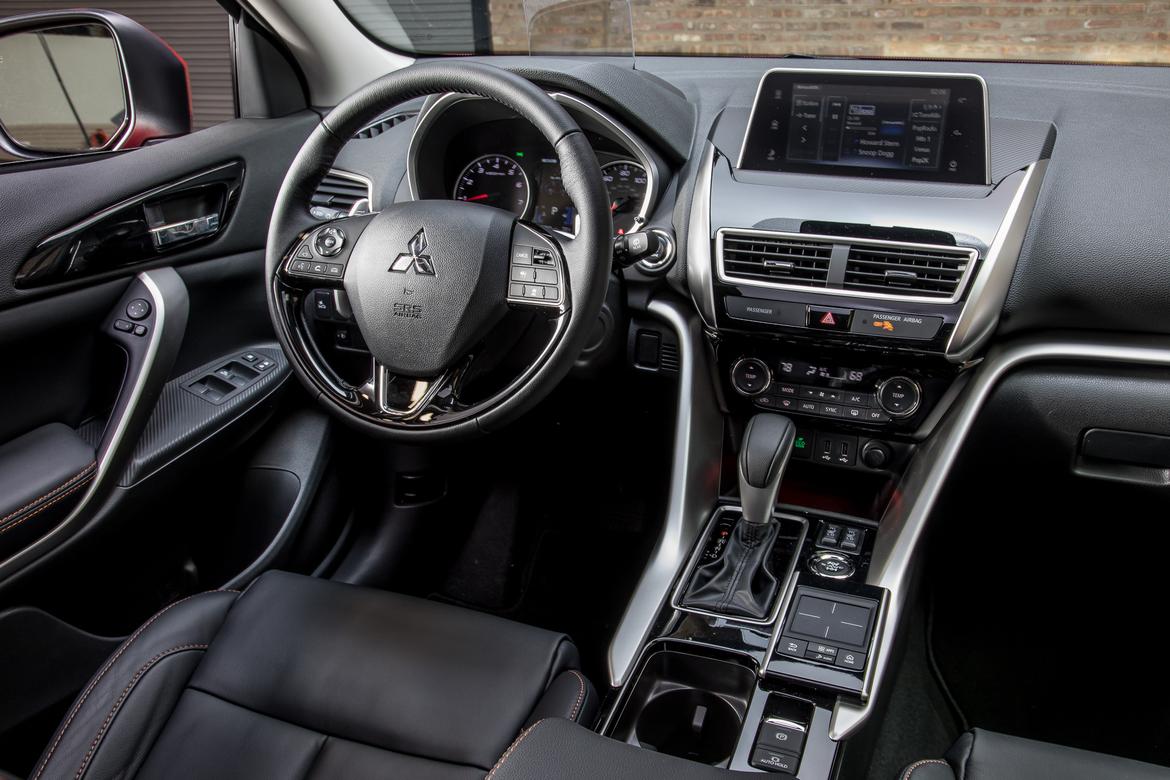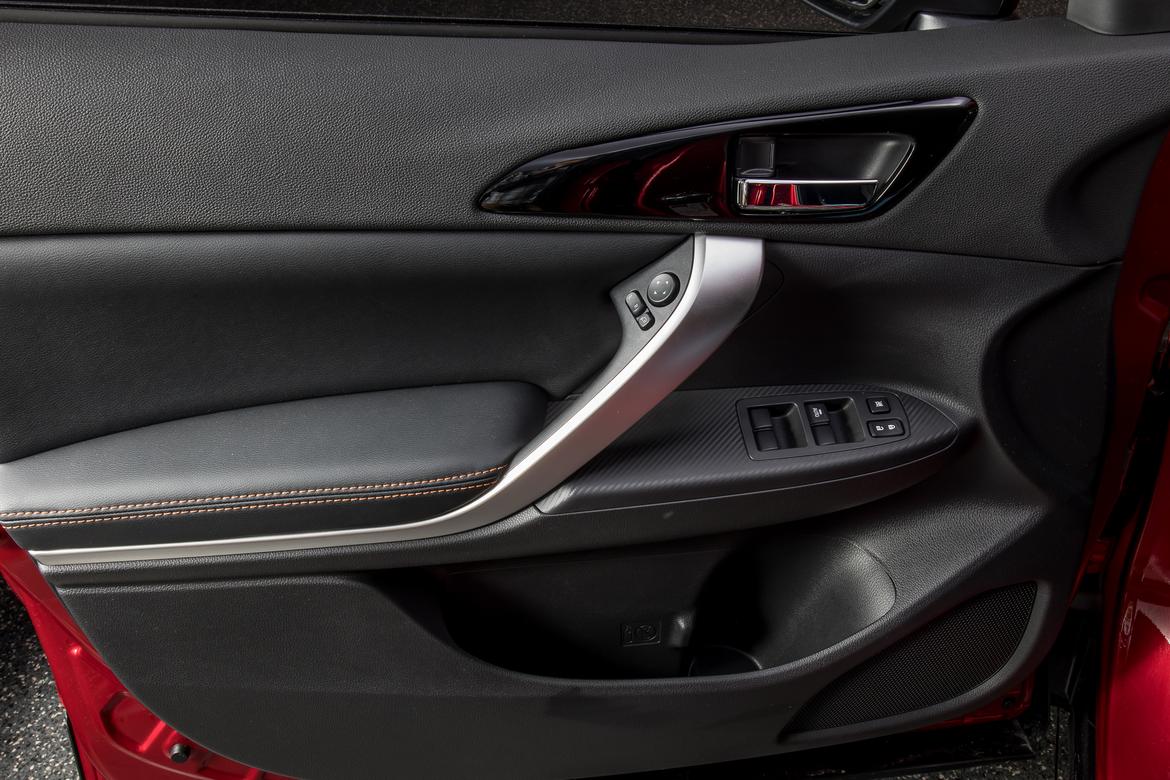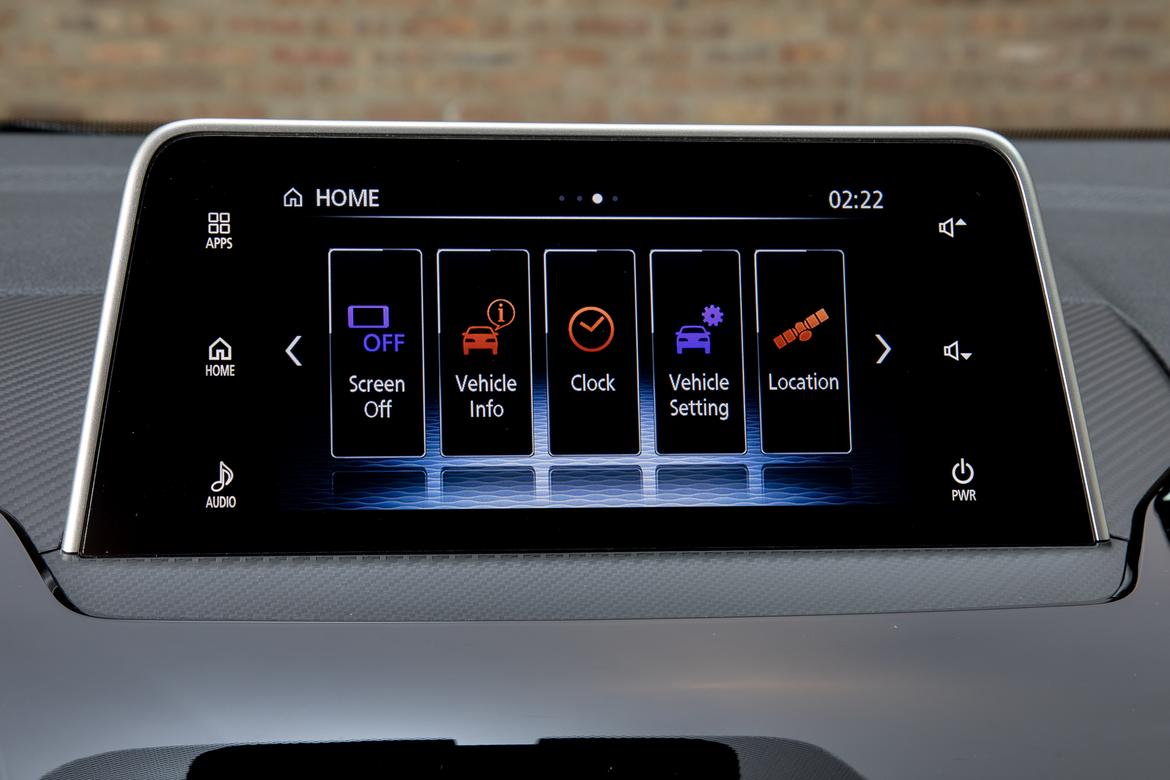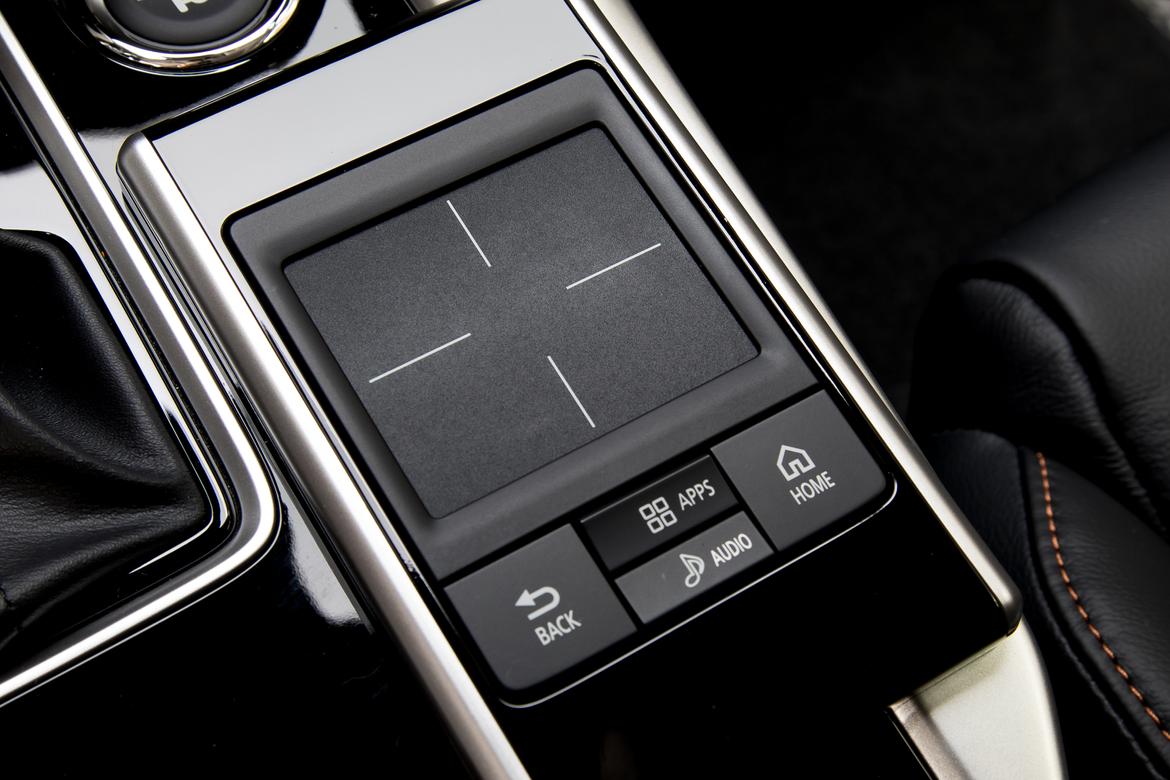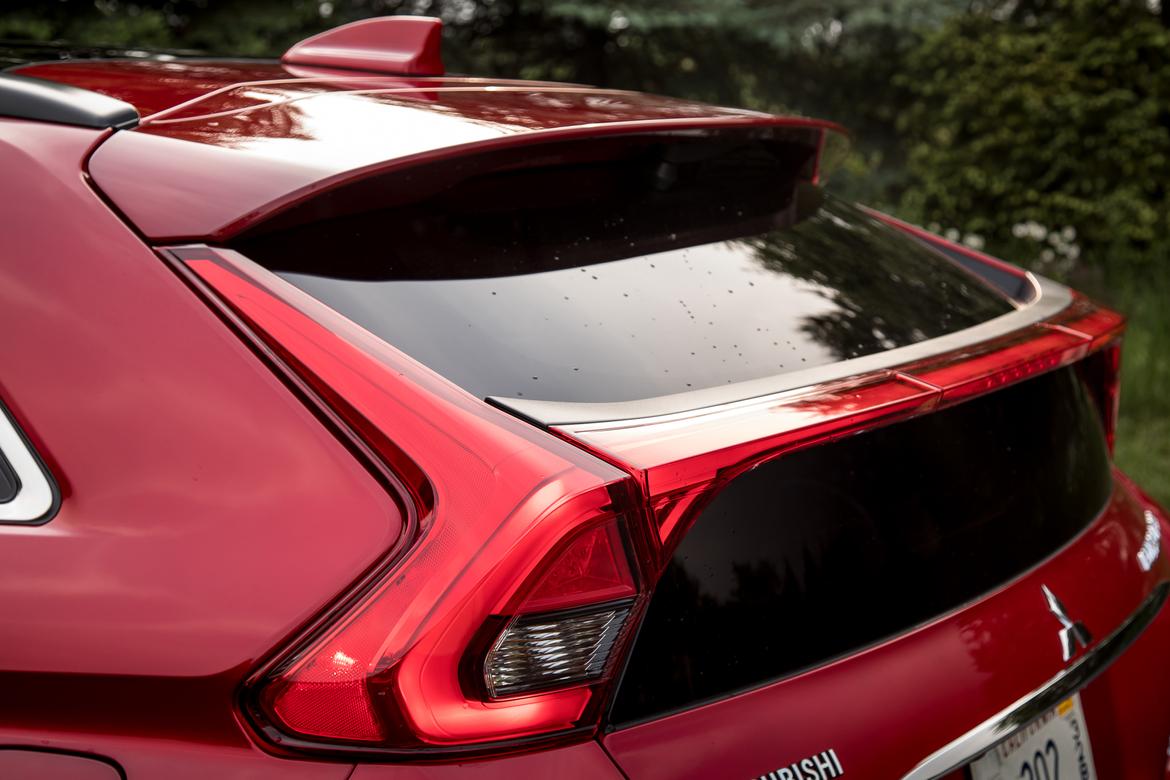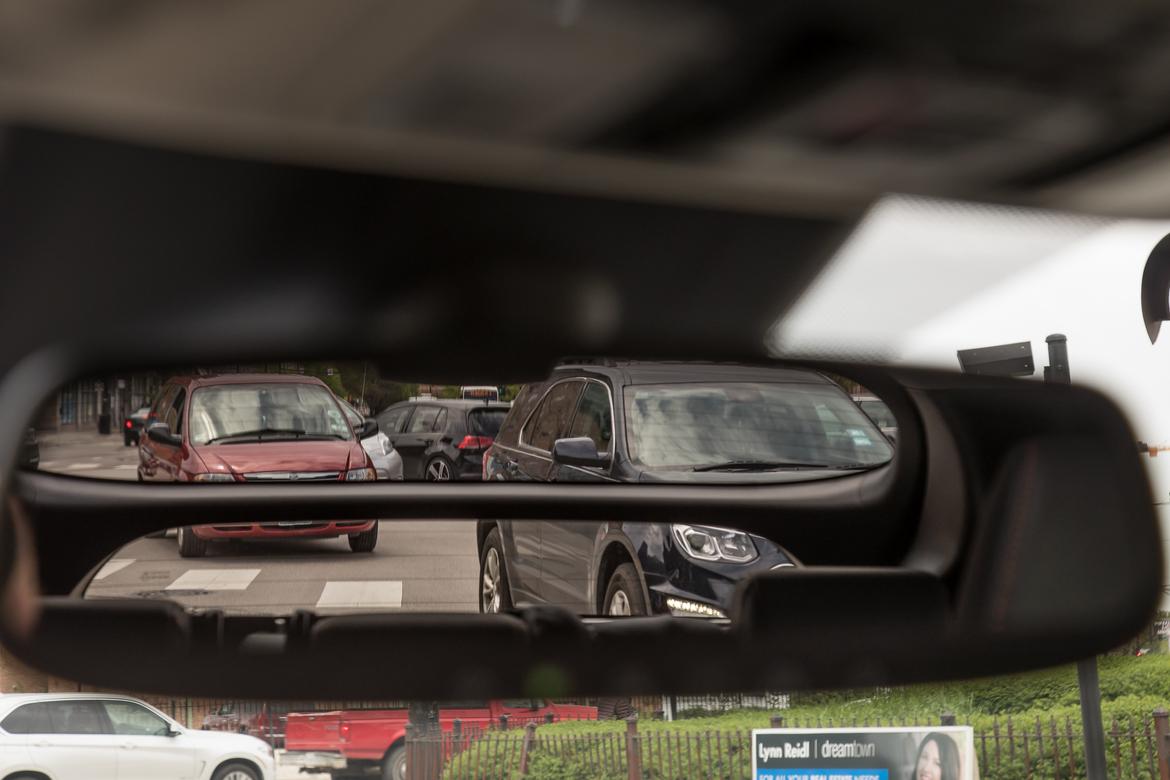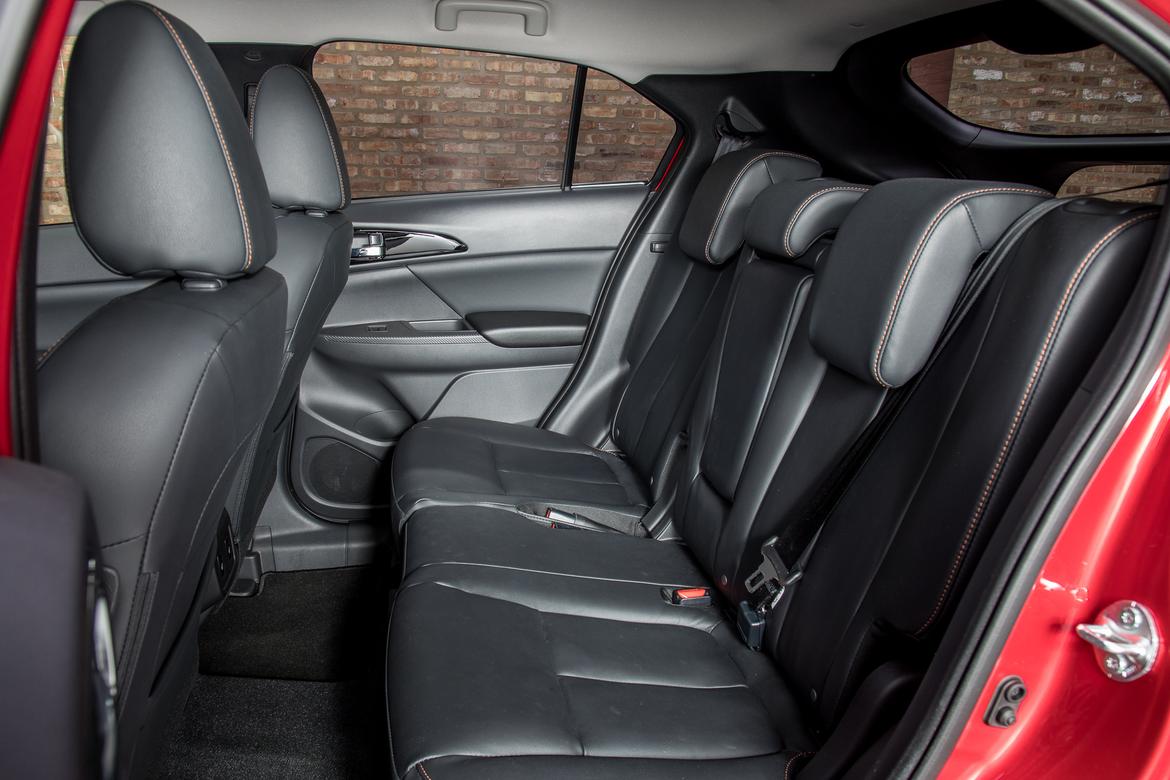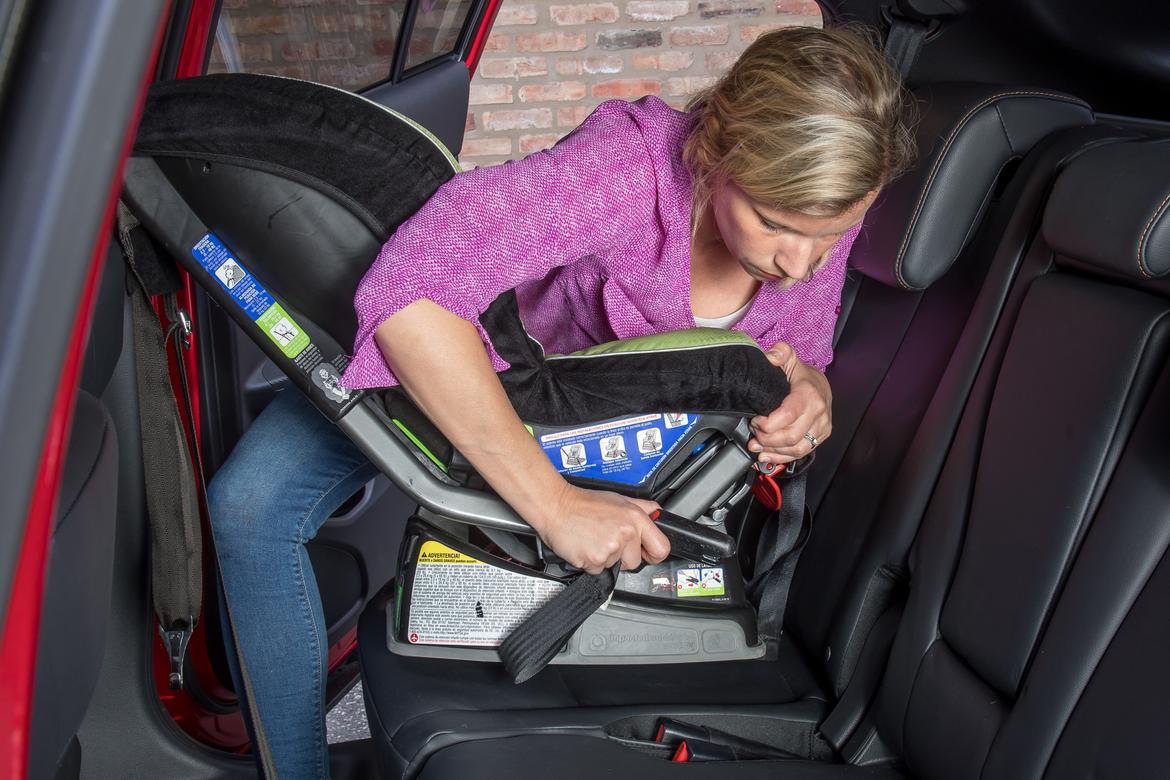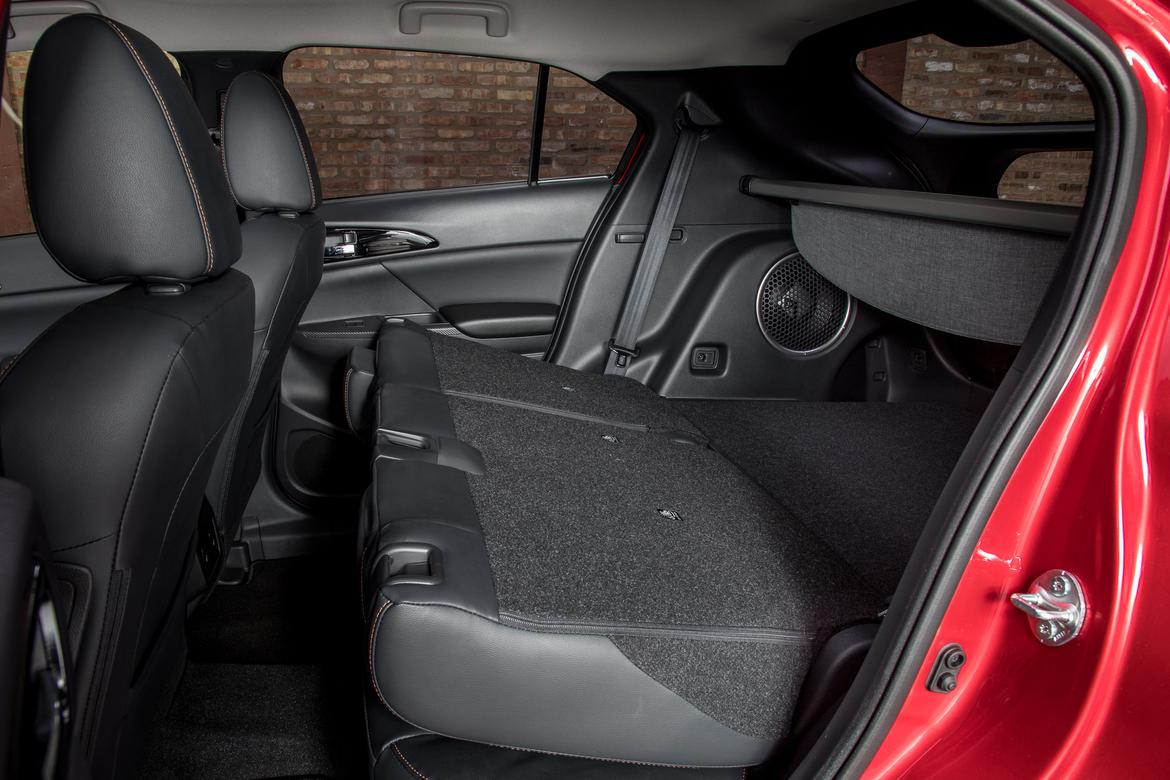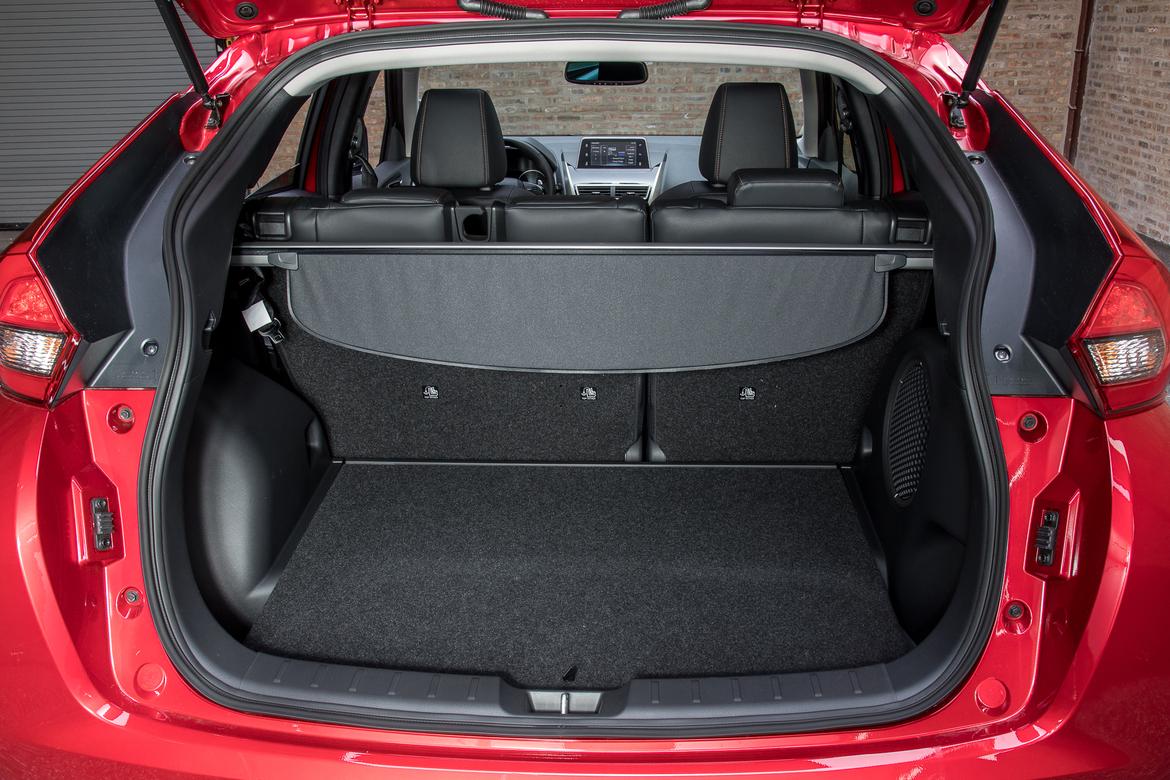with its new suv, mitsubishi aims to combine the looks and excitement of its discontinued eclipse convertible with the utility of a compact suv. the result is as awkward as it sounds in terms both of styling and of its placement in mitsubishi's lineup.
the automaker calls the eclipse cross a compact suv, and it slots between the outlander sport and three-row outlander in length. it competes against the likes of the honda cr-v, ford escape and toyota rav4; see them compared.
(un)controlled chaos
to my eye, the eclipse cross' styling is as chaotic and awkward as its name implies, from its gaping front grille to its split liftgate bisected by the taillights. inside, things settle down thanks to an uncluttered dashboard design and a sleek wraparound cockpit. hard plastic is applied liberally, but pops of glossy black and metal-like trim help offset the cheapness and impart a sporty-ish vibe.
a tabletlike 7-inch multimedia display is perched high on the dash — an excellent position for visibility but tough in terms of usability. the display is a touchscreen that can also be controlled via a console-area touchpad, but both methods present challenges.
first, as mentioned, the touchscreen requires a bit of a stretch and is a bit small. it also lacks tuning or volume knobs — an omission other brands, including honda, have been driven to correct. surrounding the screen are finicky touch-sensitive panels, which are a poor substitute for physical buttons. i had the best luck using my pinky finger to make my selections on the screen and panels — not ideal.
worse, though, is option two: the touchpad. its placement near the gear shifter is convenient, but using it is confounding and much more distracting while driving than using the touchscreen. it has a quadrant layout, and the functions of each square don't directly match up with the layout of the screen, making it not at all intuitive to use.
a few positives: apple carplay and android auto are standard, and a color head-up display ahead of the gauge cluster can be helpful. also, the eclipse cross marks the debut of the mitsubishi connect safety and assistance system. it features services like roadside assistance and stolen vehicle tracking, and it can connect with your smartphone for things like remote climate control, remote door lock/unlock, and parental controls such as geofencing and speed and curfew alerts. a two-year subscription is free. surely disappointing for foul-weather buyers, remote start is not supported.
(un)comfort
the seats up front are comfortable enough, but rear visibility is so compromised, it was hard to ever feel at ease in the driver's seat. the rear window is split by the taillights, severely limiting the rearward view. the suv's raked roofline also compromises visibility to the rear corners.
in terms of room, the backseat requires a squeeze for adults. with 35.3 inches of maximum legroom, it's smaller than the honda cr-v (40.4), ford escape (36.8) and toyota rav4 (37.2). there's even less space than in the smaller outlander sport (36.3). the eclipse cross is also around 2 inches short on backseat headroom compared with direct competitors.
two child-safety seats fit in back, but not well due to the lack of legroom. the exposed lower latch anchors were easy to use, but installation of our forward-facing car seat was compromised by tough-to-use top tether anchors. check out the full car seat check.
cargo room is just as uncompetitive. with just 22.6 cubic feet of space behind the backseat, the eclipse cross falls well short of the escape (34.3) and rav4 (38.4), while the cr-v's cargo area is close to twice as large (39.2). it's a similar story with the backseat folded; it goes down in a 60/40 split to create 48.9 cubic feet of space, again well below its competitors.
there are a few bright spots in the cabin. two available, new-to-mitsubishi convenience features make their debut on the eclipse cross: heated rear seats and a dual-pane panoramic moonroof (though a black bar in the center adds to the cabin's claustrophobic feel). there's also an available configurable backseat that has nine reclining positions and can slide forward and back nearly 8 inches.
slow and sloppy
by now, you're probably wondering if the eclipse cross has any redeeming qualities. well, road manners aren't one of them.
like trying to get out of bed after a hangover, the eclipse cross shudders and wobbles, rolls and bobs around corners, and lacks any sense of composure.
it uses a new turbocharged 1.5-liter direct-injection four-cylinder that makes 152 horsepower. it's paired with a continuously variable automatic transmission, and the two don't appear to like each other. responsiveness from a stop is patience-testing, and don't hold your breath waiting for midrange power. pop it in eco mode, which alters throttle and transmission settings to benefit fuel economy, and it feels like you're towing a semi-trailer. what's worse, the powertrain's complaining drones and groans are constant.
on the highway, its suspension tuning lacks both sporty firmness (like the mazda cx-5) and comfortable softness (like the ford escape). it's tuned instead toward wayward sloppiness. overall, its road manners are busy at best, rickety at worst. like trying to get out of bed after a hangover, it shudders and wobbles, rolls and bobs around corners and lacks any sense of composure.
mitsubishi's all-wheel-drive system, dubbed s-awc (super all-wheel control), is available. three driver-selectable modes are included (auto, snow and gravel) that alter the system's responsiveness.
here's a silver lining for the mitsubishi: the eclipse cross does ok in fuel economy. in the base 1.5 es trim level with front-wheel drive, it's epa-rated 26/29/27 mpg city/highway/combined (1 mpg lower in each category with awd). that's worse than a base honda cr-v (26/32/28) but better than base versions of the escape (21/29/24) and rav4 (23/29/25).
safety
as of this writing, the eclipse cross has not yet been crash-tested. if it's tested by the insurance institute for highway safety, results will be posted in the small suvs class.
many advanced safety features are unavailable on lower trims, and to get some of them where they're available, you still have to select pricey packages. for example, to get forward collision warning with automatic braking, you have to pop for the top sel trim level and then add the touring package, which includes forward collision warning with auto braking, adaptive cruise control, lane departure warning and automatic high beams. other optional safety features include a 360-degree camera system and blind spot monitoring.
many other compact suvs make safety features more accessible and affordable. toyota, for example, offers many safety features as standard equipment on the rav4.
why?
the 2018 mitsubishi eclipse cross starts at $24,290 with front-wheel drive (all prices include destination charges); awd is available for $600. the eclipse cross' base price is lower than the cr-v ($25,245), escape ($24,935) and rav4 ($25,705), but not enough lower to make up for its numerous faults.
so, who is this vehicle for and why would someone choose it in a jam-packed class of excellent offerings? you got me. the reasoning for the eclipse cross' existence alongside similarly sized mitsubishi models continues to elude me, as does its appeal.
's editorial department is your source for automotive news and reviews. in line with 's long-standing ethics policy, editors and reviewers don't accept gifts or free trips from automakers. the editorial department is independent of 's advertising, sales and sponsored content departments.


